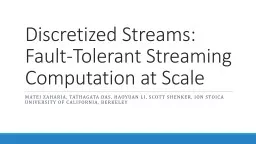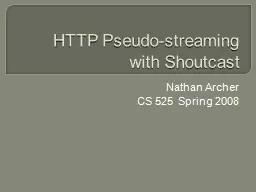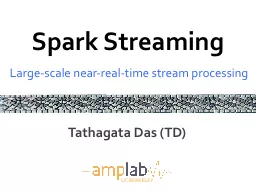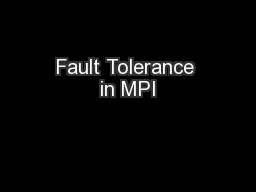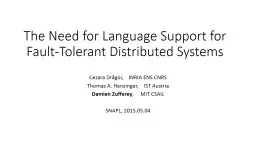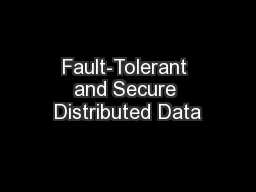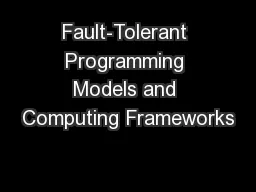PPT-Discretized Streams: Fault-Tolerant Streaming Computation a
Author : calandra-battersby | Published Date : 2016-07-20
Matei Zaharia Tathagata Das Haoyuan Li Scott Shenker Ion Stoica University of California Berkeley Stream processing and the problem Processing real time
Presentation Embed Code
Download Presentation
Download Presentation The PPT/PDF document "Discretized Streams: Fault-Tolerant Stre..." is the property of its rightful owner. Permission is granted to download and print the materials on this website for personal, non-commercial use only, and to display it on your personal computer provided you do not modify the materials and that you retain all copyright notices contained in the materials. By downloading content from our website, you accept the terms of this agreement.
Discretized Streams: Fault-Tolerant Streaming Computation a: Transcript
Download Rules Of Document
"Discretized Streams: Fault-Tolerant Streaming Computation a"The content belongs to its owner. You may download and print it for personal use, without modification, and keep all copyright notices. By downloading, you agree to these terms.
Related Documents

